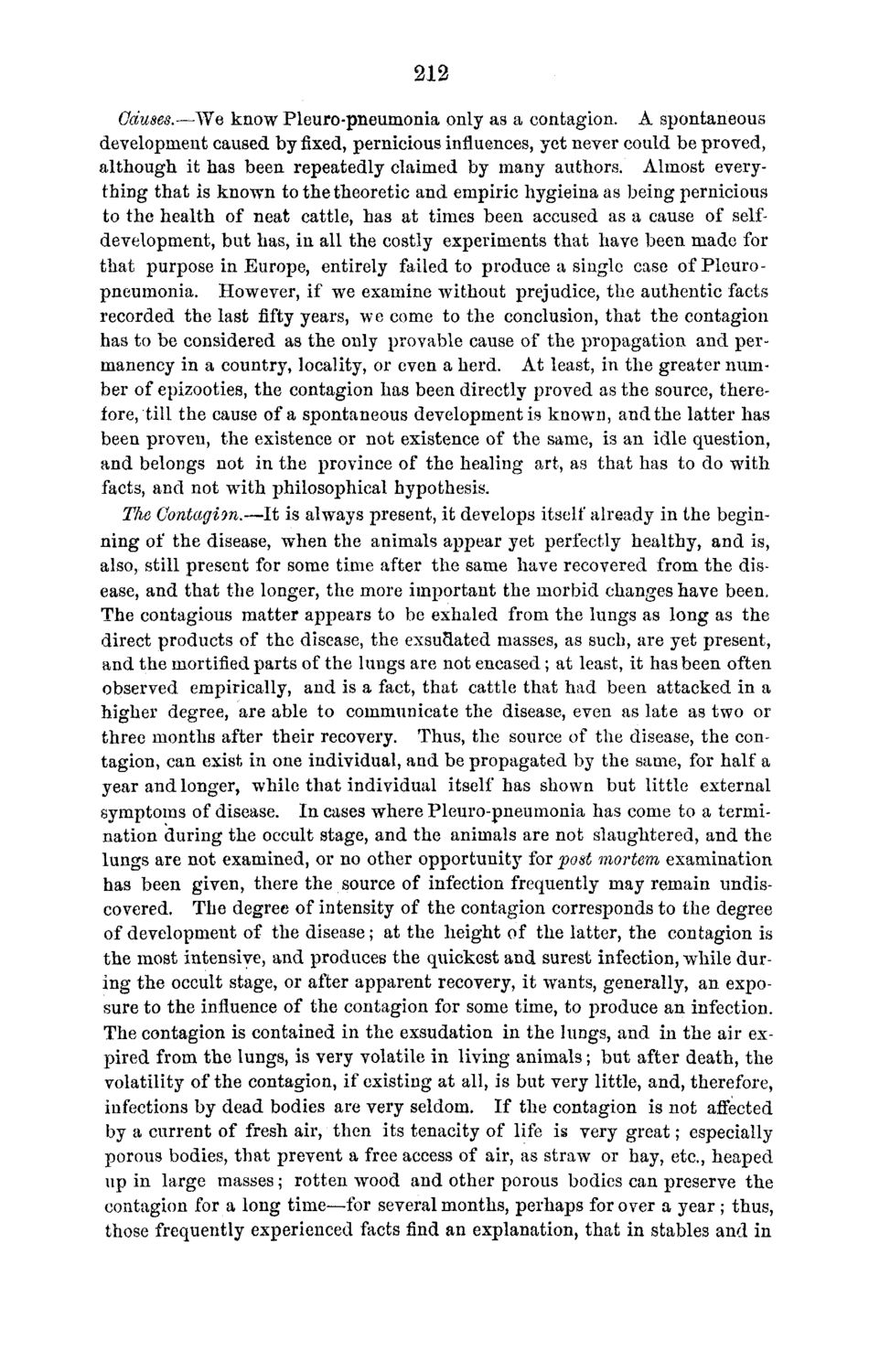| |
| |
Caption: Board of Trustees Minutes - 1870
This is a reduced-resolution page image for fast online browsing.

EXTRACTED TEXT FROM PAGE:
212 Gduses.—We know Pleuropneumonia only as a contagion. A spontaneous development caused by fixed, pernicious influences, yet never could be proved, although it has been repeatedly claimed by many authors. Almost everything that is known to the theoretic and empiric hygieina as being pernicious to the health of neat cattle, has at times been accused as a cause of selfdevelopment, but has, in all the costly experiments that have been made for that purpose in Europe, entirely failed to produce a single case of Pleuropneumonia. However, if we examine without prejudice, the authentic facts recorded the last fifty years, we come to the conclusion, that the contagion has to be considered as the only provable cause of the propagation and permanency in a country, locality, or even a herd. At least, in the greater number of epizooties, the contagion has been directly proved as the source, therefore, till the cause of a spontaneous development is known, and the latter has been proven, the existence or not existence of the same, is an idle question, and belongs not in the province of the healing art, as that has to do with facts, and not wTith philosophical hypothesis. The Gontagim.—It is always present, it develops itself already in the beginning of the disease, when the animals appear yet perfectly healthy, and is, also, still present for some time after the same have recovered from the disease, and that the longer, the more important the morbid changes have been, The contagious matter appears to be exhaled from the lungs as long as the direct products of the disease, the exsu&ated masses, as such, are yet present, and the mortified parts of the lungs are not encased; at least, it has been often observed empirically, and is a fact, that cattle that had been attacked in a higher degree, are able to communicate the disease, even as late as two or three months after their recovery. Thus, the source of the disease, the contagion, can exist in one individual, and be propagated by the same, for half a year and longer, while that individual itself has shown but little external symptoms of disease. In cases where Pleuro-pneumonia has come to a termination during the occult stage, and the animals are not slaughtered, and the lungs are not examined, or no other opportunity for post mortem examination has been given, there the source of infection frequently may remain undiscovered. The degree of intensity of the contagion corresponds to the degree of development of the disease; at the height of the latter, the contagion is the most intensive, and produces the quickest and surest infection, while during the occult stage, or after apparent recovery, it wants, generally, an exposure to the influence of the contagion for some time, to produce an infection. The contagion is contained in the exsudation in the lungs, and in the air expired from the lungs, is very volatile in living animals; but after death, the volatility of the contagion, if existing at all, is but very little, and, therefore, infections by dead bodies are very seldom. If the contagion is not affected by a current of fresh air, then its tenacity of life is very great; especially porous bodies, that prevent a free access of air, as straw or hay, etc., heaped up in large masses; rotten wood and other porous bodies can preserve the contagion for a long time—for several months, perhaps for over a year ; thus, those frequently experienced facts find an explanation, that in stables and in
| |